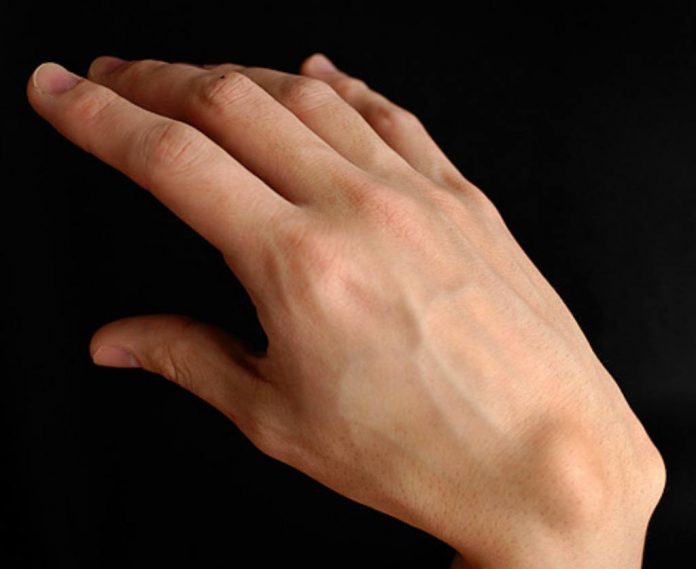A ganglion cyst is a non-cancerous tumor or lump that grows in the connective tissue of the muscles and bones, especially around a joint or covered with a tendon. Ganglion cysts most often appear on the hands and wrists, but are not uncommon on the feet. Ganglion cysts contain a jelly-like fluid.
These cysts are generally round, small ovals resembling peas. But it can also enlarge to a size of about 2.5 cm. Sometimes the position of the cyst makes movement of the joint more difficult. Ganglion cysts are painless, unless they press on the nerves around them.
Causes of Ganglion Cysts
Until now, the exact cause of the development of ganglion cysts has not been found. One theory explains that the possibility of these cysts arise due to the tissue surrounding the joints or tendons leaking. This is because the cyst contains a fluid that is similar to the thick lubricating fluid found in joints and around tendons.
Although the exact cause is not known, there are several factors that can increase the risk of developing this type of cyst.
Factors that increase a person's exposure to ganglion cysts are as follows:
Gender and age. Ganglion cysts are more common in women than in men. Prediction of the age who often experience ganglion cysts, is reported to increase, especially for ages between 20 to 40 years.
Joint or tendon injury. Someone who has experienced joint or tendon injuries, the risk for ganglion cysts can increase in the future. This can occur due to over-forced joint activity.
Inflammation of bones and joints (Osteoarthritis). A person who suffers from arthritis due to excessive activity in the joints, especially the finger joints close to the nails, increases the risk for the formation of ganglion cysts in these joints.
Ganglion Cyst Symptoms
Ganglion cysts can cause symptoms such as lumps and joint pain. Symptoms of ganglion cysts can be recognized by several characteristics including location, shape and size, and the pain they produce. Here is the explanation:
1. Location of the bump
Ganglion cysts are characterized by the appearance of a lump. These lumps can actually appear in any part of the joint, but the most common are the tendons or wrist joints, then the ankles. Ganglion cysts can also appear on the knee.
2. The shape and size of the lump
Ganglion cysts are generally round or oval in shape. Usually small so sometimes invisible and ignored. However, there are some ganglion cysts that can enlarge to more than 2.5 cm in size. Repetitive joint movement is one of the causes of this ganglion cyst enlarged.
3. Pain
Pain in ganglion cysts is not related to the size of the cyst. Ganglion cysts themselves generally do not cause pain, but if the position of the cyst presses on the surrounding nerves, then pain, tingling and even numbness arise.
Pain in the cyst is a sign that the cyst requires further treatment. Consult a doctor if you have any of the above-mentioned symptoms to diagnose the cyst and determine the next steps.
Ganglion Cyst Diagnosis
The diagnosis of ganglion cysts can generally be made only by physical examination alone. The doctor sees a ganglion cyst based on its shape and location. The lump will also be checked if it feels soft when you get pressure. If the diagnosis cannot be confirmed from a physical examination, several procedures will be carried out such as the following:
X-ray
This examination is done to make sure the lump is not a serious arthritis or even a bone tumor.
ultrasound
Ultrasound examination is done to look inside the lump and determine whether the lump is a cyst or not.
MRI
An MRI test is generally done if the ganglion cyst is small and difficult to detect.
Ganglion Cyst Treatment
Small ganglion cysts that are asymptomatic and unobtrusive usually do not require much treatment. Doctors usually only advise not to massage the lump, so usually the cyst lump can shrink by itself.
However, if a ganglion cyst causes pain and interferes with joint movement, here are some recommended actions:
1. Immobilization
The first treatment for ganglion cysts is immobilization, which is temporarily deactivating the joint area where the cyst is located using a splint or splint. This method is done because excessive joint activity can make the cyst bigger.
After the installation of the tool, usually the cyst will shrink and no longer press on the nerve. However, long-term use of a splint or splint is not recommended because it can weaken the surrounding muscles.
2. Aspiration
The second treatment for ganglion cysts is the aspiration procedure. This procedure uses a needle to remove fluid from the cyst. This method is quite effective at removing lumps, but there is a risk that the cyst may reappear.
3. Operation
Ganglion cysts can also be treated with surgical procedures. This method is usually a last resort if the two non-surgical methods above cannot treat the cyst. The doctor will remove the cyst along with the capsule that is attached to the joint or tendon.
One of the risks of this surgical procedure is that nerves, blood vessels, and tendons can be injured. However, this risk is basically rare. Just like the previous two procedures, surgery also cannot guarantee that ganglion cysts will not reappear.
Source:
Ganglion cyst – https://www.mayoclinic.org/diseases-conditions/ganglion-cyst/symptoms-causes/syc-20351156 accessed 7 February 2019
Ganglion Cyst – https://www.webmd.com/a-to-z-guides/ganglion-cyst#1 accessed February 7, 2019
Ganglion Cysts: Diagnosis and Tests – https://my.levelandclinic.org/health/diseases/15554-ganglion-cysts/diagnosis-and-tests accessed 7 February 2019
This health information has been reviewed by dr. Antonius Hapindra Kasim

0 comments:
Posting Komentar